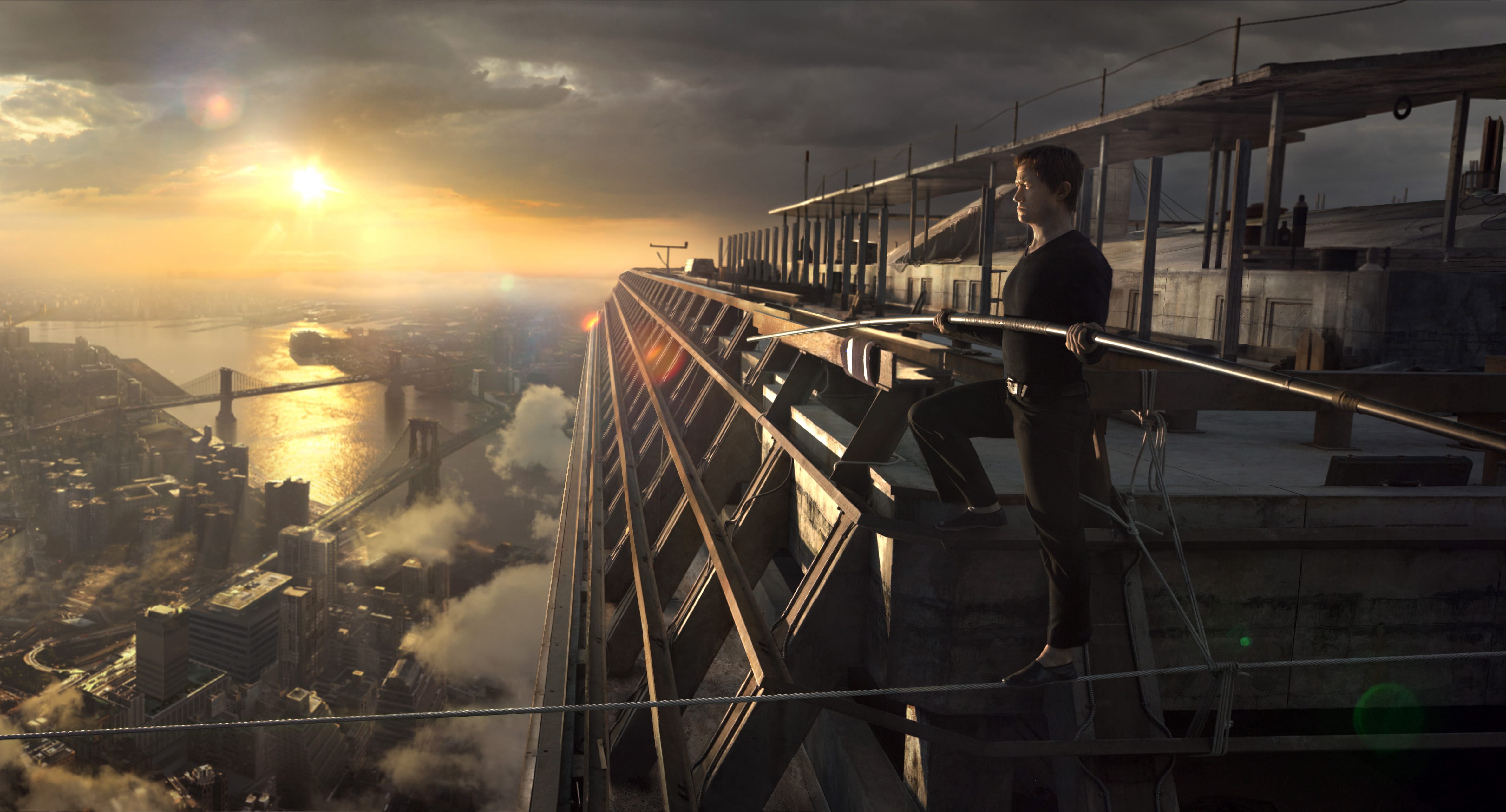Before New York’s World Trade Center and the date 9/11 walked lock-step into eternity, those enormous twin towers were best known for something else entirely, something joyous and a little bit insane.
That would be the 45 minutes that a 24-year-old French aerialist named Philippe Petit spent on Aug. 7, 1974, walking back and forth on a cable stretched 200 feet between looming structures at close to 1,400 feet off the ground.
Writer-director Robert Zemeckis’ films, including “Forrest Gump” and “The Polar Express,” are often more adventurous technologically than dramatically, and that is definitely the case with “The Walk.”
Based on Petit’s memoir, “To Reach the Clouds,” and co-written by Zemeckis and Christopher Browne, “The Walk” couldn’t be more pedestrian and earthbound as it slogs through the early parts of the wire walker’s pre-World Trade Center life.
Only in the film’s final section, when it uses the magic of computer-generated imagery to astonishingly re-create Petit’s feat, making you feel as if you are on the wire with him, does “The Walk” begin to soar.
It’s a mark of how dramatically uninvolving the early parts of “The Walk” are that even as fine an actor as Joseph Gordon-Levitt, who plays Petit, can’t bring them to life.
For one thing, Gordon-Levitt is hampered by a French accent that initially, at least, is unhappily reminiscent of cartoon character Pepe Le Pew. And he and everyone else has to cope with the film’s gee-whiz, sentimental tone.
Back we go to Paris, 1973 and Petit’s life as a unicycling mime, wire walker and street performer who steals croissants off tourists’ tables and is always looking for “the perfect place to hang my wire.”
That quest leads him to the beautiful Annie Allix (“The Hundred-Foot Journey’s” Charlotte Le Bon), a street singer who falls under Petit’s spell even though by all appearances he is an arrogant, irritating fellow.
Standard issue flashbacks show us the beginnings of Petit’s interest in wire walking and introduce us to his first teacher and mentor, Papa Rudy Omankowsky of the famous White Devils aerial troupe (Ben Kingsley).
It’s in a dentist’s office, of all places, that Petit has his eureka moment when he sees a magazine story about the soon-to-be-constructed World Trade Center towers. He steals the article, takes it home and draws a pencil line between the buildings. “With this tiny pencil, I sealed my fate,” Petit says with his usual portentousness. “This was the birth of my dream.”
Gordon-Levitt took an intense week of wire walking lessons from Petit himself, and he managed the simpler walking on his own. For trickier maneuvers, however, double Jade Kindar-Martin stepped in, with the filmmakers digitally replacing his face with the actor’s.
Getting the city that appears under Petit’s feet to look real was the work of a small army of digital technicians led by visual effects supervisor Kevin Baillie and his Atomic Fiction organization.
It would be swell if all of “The Walk” came together as beautifully as the computer effects do, but it would also be churlish not to appreciate what we do have. This film may not talk the talk, but it definitely walks the walk, and for that we are grateful.



